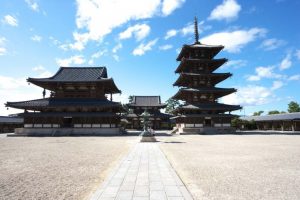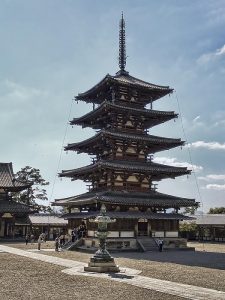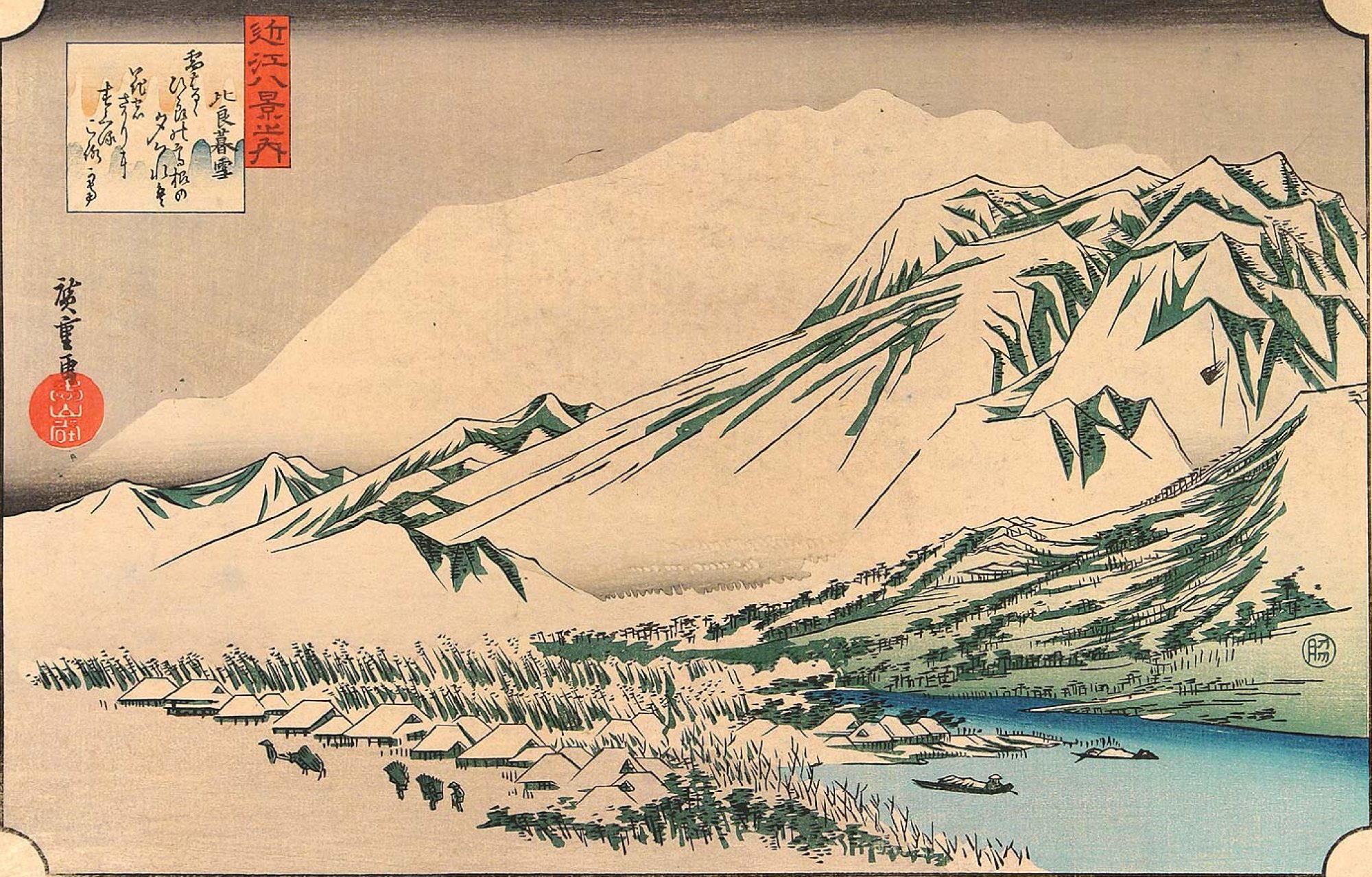As we have noted in class and readings, Japan is a nation prone to natural disasters (earthquake, tsunami, landslides, volcanic activity) yet also a nation of ingenuity and craftsmanship. For centuries Japan has been influenced by other nation-states (China, Korea, ‘Western’ North Americans) and their cultures, which has ultimately diversified many of its landscapes in different ways. For example, the Meiji Restoration period commission to gather information regarding modern ‘western’ practices overseas aided in the multifaceted modernisation of Japan. Nonetheless, of the many adopted cultural edifices of neighboring nation-states, it has been the architecture and design of pagodas which has become most appropriately suited for Japan’s unique and highly active natural environments.
Pagodas have functioned as important cultural spaces for Buddhist practices over centuries. Most have been created using wood and held together with complex joinery and column systems. Its elongated eaves have also been known to act as a tool in managing the commonly intense precipitation patterns of Japan by redirecting its further away from the base or foundation. Some of the oldest wooden structures in the world still standing are Japanese pagodas.

It is due to their multi-storied design, material, and structural design which has ultimately allowed the survival of such significant structures. Every horizontal storey within a pagoda (commonly 5 stories) sits independent of its lower and upper floors. This allows for horizontal movement which follows a pattern similar to that of a snake (the slithering/sliding back and forth) during an earthquake. It also has a central column, known as a shinbashira, which further supports the pagoda during an event. Moreover, the use of wood allows for flexibility unlike stone or brick. Unique Japanese joinery systems also affects the structural integrity of each pagoda, allowing for movement between columns and beams. The friction caused by such movement dampens the vibrations of earthquakes and typhoons.

Overall, the landscape of Japan is frequently changing and influenced by natural phenomena that when coupled with large scale human settlement can mean disaster. Yet, the remarkable design of such pagoda structures has not gone unnoticed today. Today, modern urban designers are adopting similar structural paradigms in order to mitigate any possible future disasters. Nonetheless, these historic structures are surely amazing, illustrating the rich culture and knowledge of Japan over centuries.
Sources:
http://www.wattention.com/articles/japan-world-heritage-3-buddhist-monuments-in-horyuji
http://www.hms.civil.uminho.pt/sahc/2010/79.pdf
